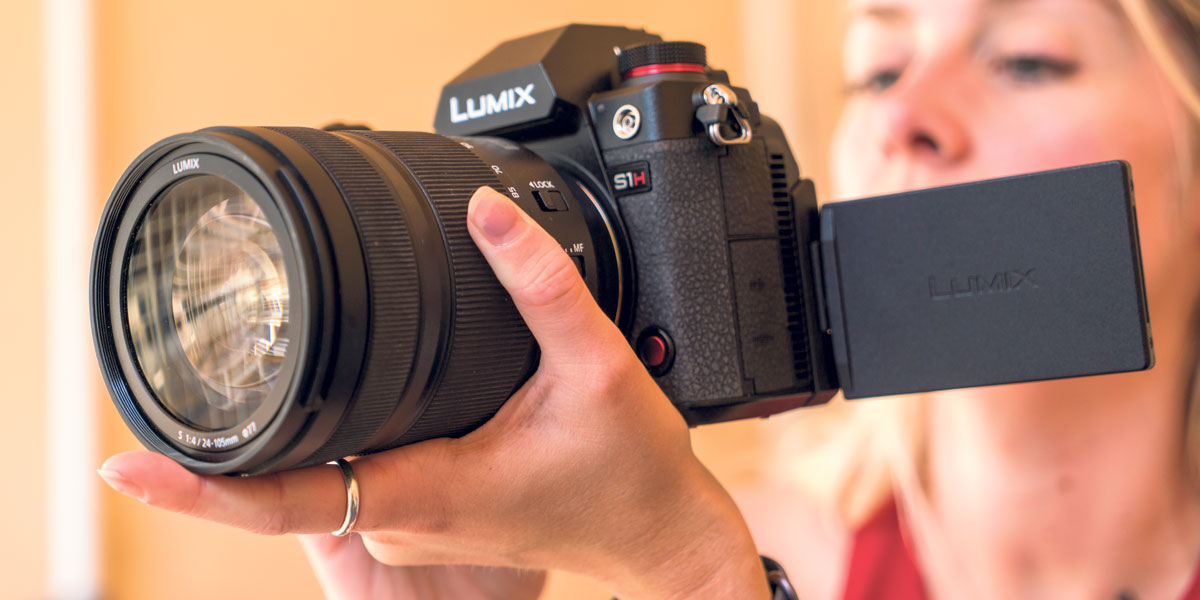
Making Movies 9: Keeping your options open
Posted on Nov 9, 2023
Delving into advanced settings can expand your skill set and transform your movies into something special
WORDS by Adam Duckworth
There comes a time when you have a decent grasp of the basics of shooting video. For example, you understand the exposure triangle is different for movies – your shutter speed is set as close as possible to twice the frame rate you are shooting at. You stick to 25fps to avoid flicker from household lights and provide a natural flow to your footage.
You may have even experimented with 50fps and above for a slow-motion effect. Perhaps you’ve tried some in-camera looks to give your recordings a different feel. And you’ve realised good audio capture is crucial, as is keeping your camera wobble-free. Maybe you’ve invested in some continuous lights, or upped the ante via use of a gimbal or drone. That’s all good stuff!
Now might be time to ramp up the quality of your footage further, with a deeper dive into some of the key video settings and what they’re used for.
The codec conundrum
If you have set your camera to its highest resolution – maybe 4K, but increasingly 6K or 8K – then you might think you are in the best place for ultimate quality. But that may not be the case, as often higher-resolution settings can cripple the choices you have for codecs or ‘encoder-decoder’ – referring to the algorithm used to code the video signal coming off the sensor, then decode it for editing and viewing – along with available frame rates.
Most videos online are viewed at Full HD 1080p, especially on YouTube or other social media channels. So when shooting in 4K or higher, you might be unnecessarily cutting down your options and clogging up your memory cards and hard drives with excess data. And remember, shooting in very high resolution can cause cameras to overheat.
There can of course be a place for ultra-high resolution, but you need to know when to use it. One example is if you want to significantly crop your footage into an HD project.
You might shoot in 6K or 8K with a wide lens when recording two people talking. Use this wide shot in post-production, then crop in for two separate tight shots of the talking heads. It’s not as good as having multiple cameras, but it can work.
As well as 4K, your camera might be able to record in DCI 4K –sometimes called C4K or Cinema 4K. Standard 4K is a 16:9 image aspect ratio while DCI/C4K is a slightly wider 17:9 ratio for a widescreen, cinematic look.
The resolution and size of your frame are not the only choices you have. Every manufacturer has a range of its own codecs, but most cameras save video in MOV or MP4 format. MOV is better for editing while MP4 is ideal for use straight out of camera.
Popular codecs include Canon’s XF-AVC and Sony’s XAVC, as well as H.264, H.265, MJPEG, MPEG-4 and AVCHD. Codecs such as XF-AVC give superb quality in 4K recording, others – such as H.265 – are open formats that are able to provide much better data compression.
Some cameras even offer ProRes recording, which is an industry-standard Apple format, for which there is usually a choice of quality levels – each one taking up more memory but incrementally offering greater colours and quality. Designed to work in Apple’s Final Cut Pro, ProRes is ideal for Mac users and it now also works in Adobe Premiere Pro and DaVinci Resolve.
When it comes to compression, we’re not just talking about individual frames, but compression between frames. All-Intra compression takes up more space than the Long GOP (Group of Pictures) format, but is better quality. There are often also progressive or interlaced options, usually used by TV companies for instant broadcast. But this is best avoided as it’s not the highest quality.
Further options open to you may include H.264 and H.265, which are usually 8-bit or 10-bit respectively. Then you have bit rates to choose, and a choice of chroma subsampling, usually labelled as 4:4:4, 4:2:2 or 4:2:0.
It’s easy to get confused, but the higher the bit-rate and the subsampling, the more colour information and hence quality you will get. But again, these take up more space and aren’t always offered in all resolution, frame rate and compression options.
On top of all this, there’s the issue of how the camera records its images. Even a 4K video is only a succession of 8.3-megapixel images, which is much less than any modern stills camera is capable of. So, when capturing images 25 times a second or more, it makes what to do with the ‘extra’ megapixels a real issue. Oversampling is when the camera takes the image from the whole sensor and creates 4K, 8.3-megapixel moving images out of it, rather than just reading a crop of the sensor, or line skipping, which essentially leaves part of the images out.
Read the full article in Issue 111 of Photography News.
Don’t forget to sign up to receive our newsletter below, and get notified about the new issue, exclusive offers and competitions.
Have you heard The Photography News Podcast? Tune in for news, techniques, advice and much more! Click here to listen for free.




